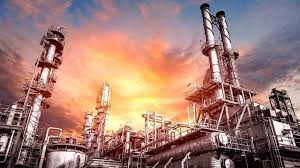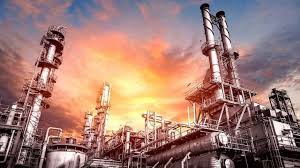
Despite rising prices and supply chain constraints, profits at industrial firms in China increased at a quicker rate in September, owing primarily to spectacular growth in the mining and raw materials industries.
However, some companies failed to overcome the high costs.
The statistics bureau stated on Wednesday that there was a 16.3 per cent year on year rise in profits to 738.74 billion yuan ($115.72 billion) among industrial firms in China which were faster than the 10.1 per cent increase that was reported in August.
Rising coal prices, supply chain issues, and power rationing caused by coal shortages as a fall out from China’s emission reduction targets impacted the country’s industrial sector.
However, Beijing has taken a number of steps to lower the prices of metals and to ease the country's power shortage, including pressing coal miners to increase output and industrial facilities to manage electricity demand.
The headline figures were driven by strong profit increases in the mining and raw materials industries. Over the first nine months, there was a 172.2 per cent rise in profits in the coal mining and washing industry. Over the same time period, earnings in the petroleum processing industry increased by 930 per cent.
However, there were pressures on power companies, which saw a 24.6 per cent decline in profits between January and September, as bottom lines were hit by restricted coal supply and rising fuel prices.
Recovery in corporate profits is continuing to be hit by high commodity prices and supply chain issues, said Zhu Hong, an NBS official.
"The problem of profit imbalances between upstream and downstream industries is fairly prominent, and the foundation for the recovery of industrial profits is not yet consolidated," said Zhu.
The government in October allowed the coal-fired electricity prices to fluctuate by up to 20 per cent from base levels which meant that power generating companies would be able to pass on more of the increased costs to commercial and industrial end users.
There was a 44.7 per cent year on year rise in industrial enterprises' profits to 6.34 trillion yuan from January to September, according to the statistics office, which was a decline compared to a 49.5 per cent growth in the number in the first eight months of 2021.
The third quarter growth of China, the second largest economy in the world, was the weakest, partly because of power shortages and housing industry jitters.
There was pressure on middle and downstream sectors to pass on prices to consumers in September because of industrial inflation which hit a new high in the month.
It is unlikely that the People's Bank of China will try to stimulate the economy by lowering the number of cash banks must have in reserve until the first quarter of 2022, according to analysts.
At the end of September, there was an 8.2 per cent year on year rise in liabilities at industrial firms compared to 8.4 per cent year on year growth at the end of August.
The industrial profit data is for major companies with yearly revenues of more than 20 million yuan from their primary operations.
(Source:www.businesstimes.com.sg)
However, some companies failed to overcome the high costs.
The statistics bureau stated on Wednesday that there was a 16.3 per cent year on year rise in profits to 738.74 billion yuan ($115.72 billion) among industrial firms in China which were faster than the 10.1 per cent increase that was reported in August.
Rising coal prices, supply chain issues, and power rationing caused by coal shortages as a fall out from China’s emission reduction targets impacted the country’s industrial sector.
However, Beijing has taken a number of steps to lower the prices of metals and to ease the country's power shortage, including pressing coal miners to increase output and industrial facilities to manage electricity demand.
The headline figures were driven by strong profit increases in the mining and raw materials industries. Over the first nine months, there was a 172.2 per cent rise in profits in the coal mining and washing industry. Over the same time period, earnings in the petroleum processing industry increased by 930 per cent.
However, there were pressures on power companies, which saw a 24.6 per cent decline in profits between January and September, as bottom lines were hit by restricted coal supply and rising fuel prices.
Recovery in corporate profits is continuing to be hit by high commodity prices and supply chain issues, said Zhu Hong, an NBS official.
"The problem of profit imbalances between upstream and downstream industries is fairly prominent, and the foundation for the recovery of industrial profits is not yet consolidated," said Zhu.
The government in October allowed the coal-fired electricity prices to fluctuate by up to 20 per cent from base levels which meant that power generating companies would be able to pass on more of the increased costs to commercial and industrial end users.
There was a 44.7 per cent year on year rise in industrial enterprises' profits to 6.34 trillion yuan from January to September, according to the statistics office, which was a decline compared to a 49.5 per cent growth in the number in the first eight months of 2021.
The third quarter growth of China, the second largest economy in the world, was the weakest, partly because of power shortages and housing industry jitters.
There was pressure on middle and downstream sectors to pass on prices to consumers in September because of industrial inflation which hit a new high in the month.
It is unlikely that the People's Bank of China will try to stimulate the economy by lowering the number of cash banks must have in reserve until the first quarter of 2022, according to analysts.
At the end of September, there was an 8.2 per cent year on year rise in liabilities at industrial firms compared to 8.4 per cent year on year growth at the end of August.
The industrial profit data is for major companies with yearly revenues of more than 20 million yuan from their primary operations.
(Source:www.businesstimes.com.sg)





